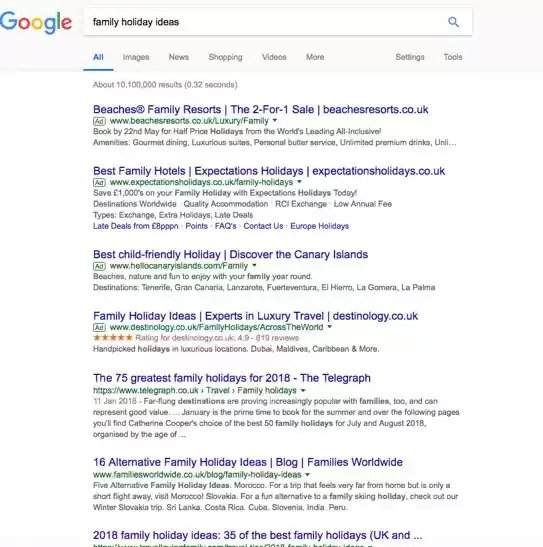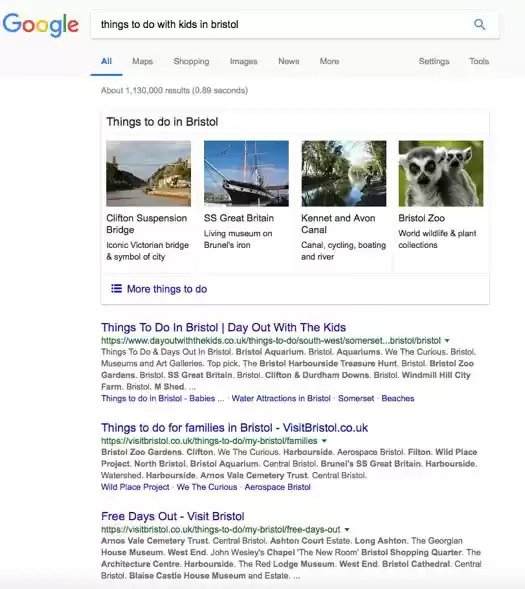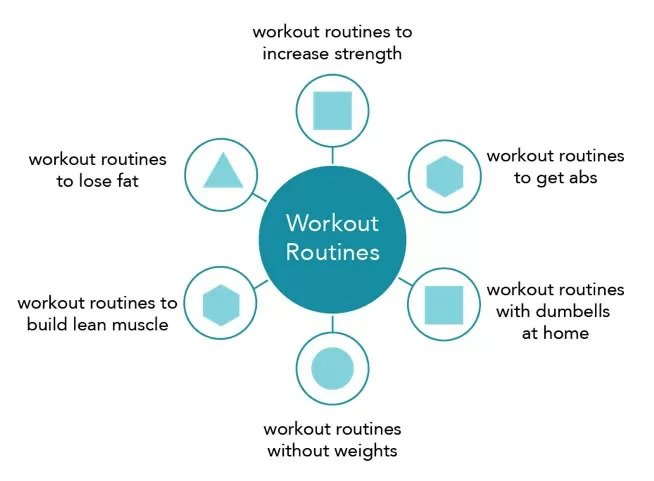Last April, Noble Performs attended the Share Global Insights Conference in London, where I was delighted to speak on a panel, discussing the roadmap to digital success. During the panel, we took some time to reflect on the trends and strategies that are driving SEO and content marketing at the moment. During our panel, the subject of keyword clustering (or topic clusters) came up on several occasions. Keyword clustering has been a key component of our SEO approach for some time, so we’re pleased to see other industry players getting on board too. If you’re not already in the know about keyword clustering, also known as topic clusters, we’ve put together a brief guide to help navigate a shift towards this strategy. By its very nature, Search Engine Optimization is constantly evolving. You can pretty much bet that the SEO strategies and tactics you’re using today will be in need of a refresh in six months. New technology, changes in consumer behavior and alterations to search algorithms are among the factors that influence updates. Constantly monitoring industry trends, then learning and testing techniques in the real world requires a huge investment of time from a digital performance marketing agency like ours but is wholly necessary to provide the best possible outcomes for our clients. As a result, coming across a strategy such as this one that has the potential to transform the SEO industry for years to come- has gotten us pretty excited!
Keywords: The good, the bad and the ugly
At the core of SEO is the concept of the keyword or search term. SEO is formed around the premise that someone is actively looking for information on a specific topic; that they have intent. This differs from the traditional advertising and marketing model, where a company creates a message based on what they consider to be in the interests of their target audience. For most people, search starts by asking Google to look for information on a particular topic. The precise words used in such a search have always been crucial for practitioners in SEO. As marketers we would consider:
- “Is this the way my target audience is really searching for what we offer?”
- “Does this method of search show an intent to purchase our product or service?”
- “Would an alternative word work better to describe what we offer?”
In order to get an answer we have to make a number of assumptions. On the plus side, as experienced SEO professionals, we’re able to make a lot of accurate speculations. We’re able to define when a customer is looking with "research intent" versus when they’re looking with "purchase intent." We’re also able to optimize for plural and singular keyword searches. Yet no matter how good we are at this, we still miss a large portion of our potential audience. But why? The answer is that there are many reasons. One is that we have our own personal language biases and our way of speaking has an influence on framing search. Additionally the sheer number of people from a variety of backgrounds who are scanning the web makes it a virtually impossible task to imagine each and every potential search term they could use. To illustrate a simple example, what happens when someone is researching a holiday with their family? Let’s consider some of the possible terms they could use in a search engine:

- “family holiday ideas”
- “family friendly holidays”
- “holidays with kids”
- “things to do with kids in Bristol”
- “best family friendly destinations in South West England”
- “travelling with children”
- “holiday ideas with kids”
It’s quickly evident that there are a number of ways a person could search with the same purchase intent. If you then actually run a search for each of the above search terms you’re then likely to see significant variations in the results that Google displays. One of the major reasons for this is that companies will have selected variations of possible search terms and then committed their optimization strategy to these terms. Essentially, it’s a self-limiting approach.
A search for “things to do with kids in Bristol” on Google If you compare the results of the two searches in more detail, you’ll easily see that the layout of the SERP is very different. This is due to Google attempting to provide the most relevant content for the person doing the search, as well as company’s strategy of choosing just a handful of keywords to earn rank for. Ultimately, this is a rapidly outdated approach to SEO, and it’s time for a more modern, effective method.

Keyword clustering for better SEO performance
To define keyword clustering in the simplest terms, a topic cluster is a way of thematically grouping content. They are formed of a core topic or “pillar” page with related subtopics or “cluster” pages. The cluster content links back to the pillar page, as well as to the other cluster pages. Generally, a pillar page would comprise of a long-form content page that’s rich in information on an extensive topic, while the cluster would be a more specific look at topics that relate to the pillar page. This video from the content marketing platform, Hubspot, is worth a watch. At Noble Digital Performance, we've been successfully implementing  keyword clustering for our clients since 2015, working with enterprise SEO platform, BrightEdge. Until this year we’ve been internally referring the to the concept as content siloing but effectively it’s built on the same principles. Through creating a semantic relationship and hierarchy between the individual content we’re able to consistently provide an improved user experience and stronger signals to the search engines on which topics our client’s sites have authority in. Our idea for content silos (or topic clusters) was inspired by our experiences working in the travel industry for several top-tier destination marketing organizations (DMOs). Our observation was that while our clients tended to show a decent footprint and solid rankings in the first two pages across search engines, hitting the top spot for a range of topics still eluded them. To take an example; if you were searching for dining options you would be likely to find that top rankings would be held by sites such as Yelp, OpenTable, and the like who focus on restaurants and dining-related content rather than the higher quality of content available on the DMO sites. Through detailed analysis of site structure, internal linking and the quality of content we established several factors:
keyword clustering for our clients since 2015, working with enterprise SEO platform, BrightEdge. Until this year we’ve been internally referring the to the concept as content siloing but effectively it’s built on the same principles. Through creating a semantic relationship and hierarchy between the individual content we’re able to consistently provide an improved user experience and stronger signals to the search engines on which topics our client’s sites have authority in. Our idea for content silos (or topic clusters) was inspired by our experiences working in the travel industry for several top-tier destination marketing organizations (DMOs). Our observation was that while our clients tended to show a decent footprint and solid rankings in the first two pages across search engines, hitting the top spot for a range of topics still eluded them. To take an example; if you were searching for dining options you would be likely to find that top rankings would be held by sites such as Yelp, OpenTable, and the like who focus on restaurants and dining-related content rather than the higher quality of content available on the DMO sites. Through detailed analysis of site structure, internal linking and the quality of content we established several factors:
- The best topic-related content wasn’t always housed in the main directory, often it was located in the blog
- Related content wasn’t linked to their primary page or together
- Several pages were competing for rank on the same keyword
- Often the pillar page had lower quality content than that of the related content.
A pattern began to emerge, so we continued to analyze and compare for other industries too. Ultimately it became clear that while these sites had gained a large footprint from having a large amount of content (breadth), they invariably had little topical depth. Adopting the keyword clustering model therefore enabled both.
Machine learning and why topic clusters work
While it’s fairly intuitive that topic clusters seem to be a brilliant way to group content and organize concepts, the reason that it’s so effective for SEO goes beyond that. Back in 2013, Google’s Hummingbird update challenged traditional keyword-focused SEO with a crossroads. The search algorithm began parsing out phrases instead of focusing on keywords. In the SEO community, the Hummingbird update is widely acknowledged ad Google’s official switch from keyword to topic focus. SEO professionals were given a further major impetus to move towards topic-based strategies in 2015 with Google’s RankBrain update. This development of Google’s machine-learning algorithm was created to better interpret the content of people’s search queries. Using previous searches as a basis, RankBrain pulls out similar themes and multiple phrases and keywords to provide the best results for that query. When you add a further trend for voice-assisted search on mobile devices (Google attributes more than 20% of mobile search to this), it becomes increasingly obvious that topics are rapidly replacing keywords.
Putting it all together
As digital marketers this means that we need to be increasingly attentive to creating the most relevant content resource around a topic instead of creating a strategy driven by optimizing pages based on a series of chosen keywords. In effect, Google’s advances mean that it can now interpret the intention behind a query and match it to sites that produce the most credible results for that intent. While this requires a fundamental shift in SEO approach, the end result is a far better performance by the search engines, and a more satisfactory experience for site visitors. Rather than simply intercepting keyword searches, topic clusters drive understanding of the buyer’s journey through responding to their questions more effectively. The result is that your content gets the exposure you desire and wins you loyalty too. Keyword clustering is also an ideal content creation framework and allows you to leverage the clustered content beyond just SEO, but into an integrated approach. For instance, content clusters can inform your site extension strategy within AdWords tying together your SEO and pay-per-click strategy.
About the author
Kate Sikora Client Success Director Grace under pressure. That’s how others describe Kate Sikora’s ability to do so many things well – without going mad. But with her sanity fully intact, Kate serves as the Client Success Director and overseer of daily operations for Noble Digital Performance. This Manchester native supports new business opportunities whilst working on Noble’s U.K. marketing efforts. An entrepreneur who has successfully run her own business, Kate also helps Noble with integrated digital strategies, finance, recruitment and mentorship of the U.K. team. An avid skier and paddleboarder, Kate moved back to England in 2017 after living several years in the United States. Noble Digital Performance Like peanut butter and jelly (or jam), Noble Digital Performance is made of two things that are better together. It’s the across-the-pond partnership between Noble Studios, a leading-edge digital marketing agency from the US, and the team behind Mr. B & Friends, a full-service brand agency from Bristol. From their home in Reno, Nevada, Noble Studios brings 15 years of digital success with international clients, a contagious can-do attitude and Silicon Valley smarts. With Mr. B & Friends, we sit at the intersection where technology, creativity and ambition meet; where they connect and become buddies (or chums). It means Noble Digital Performance has a simple goal. To harness the power of digital, to consistently and continuously improve what we do for our clients. To combine vision with insight and delivery with results. Together, we’re better.

